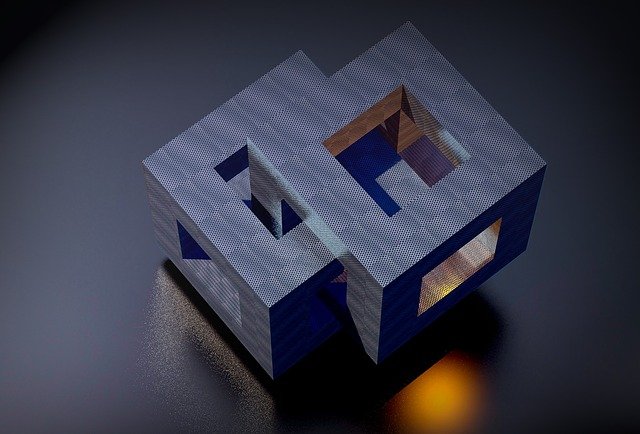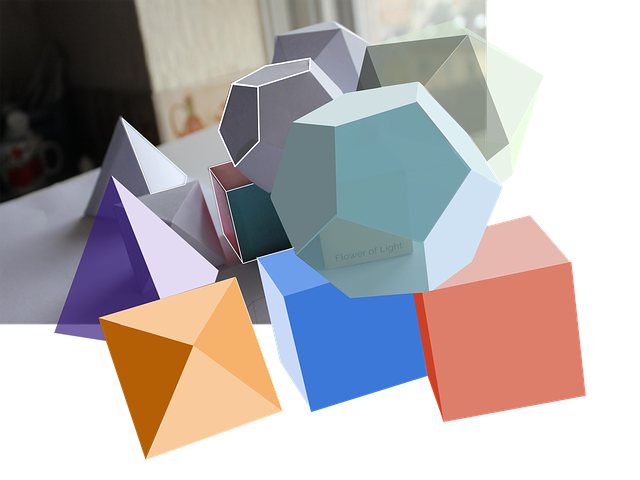고차원 기하학에 관해서 About Higher-dimensional Geometry 01
안녕하세요! @yey 입니다. 첫 글을 작성하고나서 어떤 글이 창의적이고 흥미로운 주제가 될 지 고민하던 중 얼마 전 재미있는 아이디어가 떠올라 이렇게 글을 작성하게 되었습니다. 재미있게 읽어주시면 좋겠습니다.
Hello! This is @yey. After writing my first post, I'd been thinking about what would be a creative and interesting topic, and I finally came up with a good idea. So I'm writing this post. Please enjoy this post.
얼마 전에 고등학교 입체도형 문제들 몇 개를 풀다가 왜 많은 사람들이 입체도형을 평면도형보다 어렵게 느낄까 하는 생각이 들었어요. 답은 단순합니다: 우리가 일상적으로 겪는 공간은 3차원이고 우리는 모든 것을 2차원으로 보기 때문이죠. 여기서 몇 가지 재밌는 상상을 해볼 수 있어요. 만약 우리가 일상적으로 겪는 공간이 4차원이고 우리의 시야가 3차원이라면 지금보다 많은 사람들이 3차원 도형을 쉽게 생각했을까요? 그러면 교육과정도 지금 우리의 교육과정과는 다르고 많은 학생들이 4차원 도형을 다루는 문제들을 어려워할까요?
A few days ago, I saw some senior school level math problems dealing with solid figures and I just started to think about why some people feel more difficult to deal with solid figures than plane figures. The answer was simple: it is because the space we experience in our daily life is 3-dimensional and our vision is 2-dimensional. Now imagine the following interesting situations. If the space we experience in our everyday life were 4-dimensional and our vision were 3-dimensional, would people feel easy to deal with 3-dimensional figures? If then, would the math curriculum different from ours of nowadays and would the students feel difficult to solve problems about 4-dimensional figures?

제 개인적인 생각으로는 만약 그랬다면 중고등학교에서 배우는 수학이 더 다양하고 흥미로웠을 것 같아요. 하지만 그렇지 못해 너무 슬프네요. 이 포스트를 다 읽고 나시면 제 이야기에 공감하게 되실겁니다.
In my opinion, if then, the math we learn in junior and senior school might be more various and interesting. How sad is that we are living in a 3-dimensional world? After reading the rest of this post, you probably will agree with me.
그러면 4차원 혹은 고차원 공간은 무엇을 의미하는가? So what do you mean by 4-dimensional or higher dimensional space?
'4차원 공간' 이라는 말을 들으면 어떤 분들은 물리학이나 시공간 연속체 같은 걸 떠올릴 수도 있을 것 같네요. 하지만 수학적으로는 '4차원 공간'(더 정확하게는 '4차원 유클리드 공간')은 그렇게 거창한 건 아닙니다. 우리가 평면과 3차원 공간의 점들을 각각 좌표로 (x, y), (x, y, z)처럼 나타내듯 4차원 혹은 일반적인 n차원 (유클리드) 공간 역시 우리가 시각화하기는 힘들지만 그저 n개의 실수의 순서쌍들로 나타내어지는 점들의 공간일 뿐입니다.
Some people might think about physics or space-time continuum when heard the term '4-dimensional space'. However in mathematics, the term '4-dimensional space' (rigorously, '4-dimensional Euclidean space') does not refers to that kind of serious things. Even if it is hard to visualize higher dimensional spaces, we can think such spaces as follows: Just like we did expressed every point in a plane or a 3-dimensional space as (x, y), (x, y, z) by using coordinates, a 4-dimensional or the general n-dimensional (Euclidean) space is nothing but the space that each point of it can be expressed as an n-tuple of real numbers.
고차원 기하학 Higher Dimensional Geometry
이제는 그러면 고차원 공간의 기하학에 대해 이야기 해보겠습니다. 고차원 공간에서도 우리가 2, 3차원에서 했던 것과 마찬가지로 두 점 사이의 거리, 길이, 넓이, 부피, 초부피(4차원 혹은 그 이상의 차원의 도형의 크기를 나타내는 말), 또는 각도 등을 정의할 수 있어요. 두 점 사이의 거리는 피타고라스 정리를 이용하고, 각도는 벡터의 내적을, 길이, 넓이, 부피, 초부피 같은 양들은 적분을 이용하면 2, 3차원에서 했던 것과 똑같이 그 개념들을 정의할 수 있어요. (이번 포스트에서는 그런 자세한 내용들은 다루지 않을게요;;)
한 가지 흥미로운 점은 4차원 혹은 그 이상의 공간에서도 2, 3차원 공간의 도형들에 대응하는 도형들이 존재한다는 점이라고 할 수 있어요. '원'에 대응하는 3차원 도형이 '구'이고, '정사각형'에 대응하는 3차원 도형 '정육면체'가 존재하듯, 4차원에도 '구'에 대응하는 '초구', '정육면체'에 대응하는 '정팔포체'라는 도형이 존재해요. 만약 우리가 4차원 공간의 네 번째 축을 w축이라고 이름 붙이면 반지름이 r인 초구는 방정식 x^2 + y^2 + z^2 + w^2 = r^2 으로 나타낼 수 있어요. 이런 4차원 도형들에 관한 더 자세한 이야기는 다음 포스트에서 다루도록 할게요.
Now let me talk about the geometry of higher dimensional space. In the higher dimensional spaces, we can define the distance between any two points, length, area, volume, hypervolume(which means the size of a 4-dimensional or higher dimensional figure), and angle as we did in 2 and 3-dimensional spaces. We can use the Pythagorean theorem, inner product of vectors, and integrals to define the distance between any two points, angles, and length, area, volume, hypervolume, respectively. (However, I won't deal with the details in this post.)
One interesting thing to notice is that there are higher dimensional figures that corresponds to some figures in 2 or 3-dimensional spaces. For instance, just like the 3-dimensional figures 'sphere' and 'cube' corresponds to the 2-dimensional figures 'circle' and 'square', the 4-dimensional figures 'hypersphere' and 'tesseract' corresponds to 'sphere' and 'cube'. If we call the fourth axis of the 4-dimensional space as the w-axis, we can express a hypersphere with radius r as the equation: x^2 + y^2 + z^2 + w^2 = r^2. I will tell you the details about these 4-dimensional figures in the next post.

자, 그래서 제가 이 포스트를 통해 알려드리고 싶었던 가장 중요한 정보는 2차원에 정다각형, 3차원에 정다면체가 있는 것과 마찬가지로 고차원에도 '정다포체'라고 불리는 도형들이 존재한다는 거죠! 정다각형이 무수히 많이 존재한다는 사실과는 달리 정다면체는 딱 다섯 가지 종류(정사면체, 정육면체, 정팔면체, 정십이면체, 정이십면체) 밖에 없죠. 그럼 4차원 정다포체는 몇 종류가 있을거라 생각이 되시나요, 정다면체보다 적은 개수가 존재할까요? 신기하게도 4차원에는 총 여섯 종류의 정다포체가 존재해요. (이 여섯 종류의 정다포체는 아래의 위키피디아 링크에서 그 그림을 보실 수 있습니다.) 그러면 5차원 이상은 어떨것 같으신가요? 4차원의 경우보다 많아질까요? 5차원 이상에서는 각각의 차원에 딱 세 종류의 정다포체만이 존재하는데요, 이 세 종류는 각각의 차원에서 3차원의 정사면체, 정육면체, 정팔면체에 대응하는 도형들이라는 사실! 놀랍지 않나요?
자 이제 아까 제가 말씀드린대로 우리가 일상적으로 겪는 공간이 고차원 공간이었다면 더 재미있을 것 같다는 저의 의견에 동의하시나요? ㅋㅋ 오늘 포스트는 여기에서 마치고 다음 글에서 이런 도형들을 어떻게 찾아내는건지, 어떤 성질들이 있는지 다뤄보도록 하겠습니다. 재미있게 읽으셨길 바라며 다음 포스트에서 뵙겠습니다!
Well, the information that I really want to introduce to you is that there are some figures called 'regular polytopes' in the higher dimensional spaces just like there are 'regular polygons' and 'regular polyhedra' in 2-dimensional space and 3-dimensional space, respectively! In contrast to the fact that there are infinitely many regular polygons, there are only five regular polyhedra; tetrahedron, cube, octahedron, dodecahedron, and icosahedron. How many 4-dimensional regular polytopes do you think are there, less than the number of regular polyhedra? Interestingly, there are SIX 4-dimensional regular polytopes. (You can see their images at the wikipedia pages in the below.) Then how about the space with dimension greater than or equal to 5? More regular polytopes than the number of 4-dimensional polytopes? There are only THREE regular polytopes in each space with dimension greater than or equal to 5, and each of them corresponds to the 3-dimensional figures 'tetrahedron', 'cube', and 'octahedron.' Isn't that amazing?
So now do you agree with my opinion that it would be more fun if the space we experience in our daily life were a higher dimensional space? I'll just finish today's post here and I will talk about how to find the regular polytopes, and what interesting properties they have in the next post. I hope you enjoyed it! See you in the next post!
아름다운 4차원 정다포체 그림 보기 See the beautiful images of 4-dimensional regular polytopes :
https://en.wikipedia.org/wiki/5-cell
https://en.wikipedia.org/wiki/Tesseract
https://en.wikipedia.org/wiki/16-cell
https://en.wikipedia.org/wiki/24-cell
[kr-newbie를 위한 랜덤 보팅!!]This post received a 93.15% upvote from @jongeun! For more information, click here!
좋은글 잘 읽었습니다. ㅎㅎ 고차원 기하학과 regular polytopes 좋은 내용 배우고 갑니다 ㅎㅎ
저는 regular polytopes 하니까 coxeter group 이 떠오르는군요;; ㅎㅎ
먼지가 쌓여져 있는 군론책을 꺼내볼 기회가 생겼네요 ㅎㅎ
하하 @beoped님 재미있게 읽어주셨다니 감사합니다. 저도 Coxeter group이라는 용어는 들어본 적이 있는데 들어보기만 하고 그렇게 자세히는 공부를 못했네요 ㅜ 나중에 기회가 되면 꼭 공부해보고 싶어요!
Congratulations @yey! You have completed some achievement on Steemit and have been rewarded with new badge(s) :
Click on any badge to view your own Board of Honor on SteemitBoard.
For more information about SteemitBoard, click here
If you no longer want to receive notifications, reply to this comment with the word
STOP